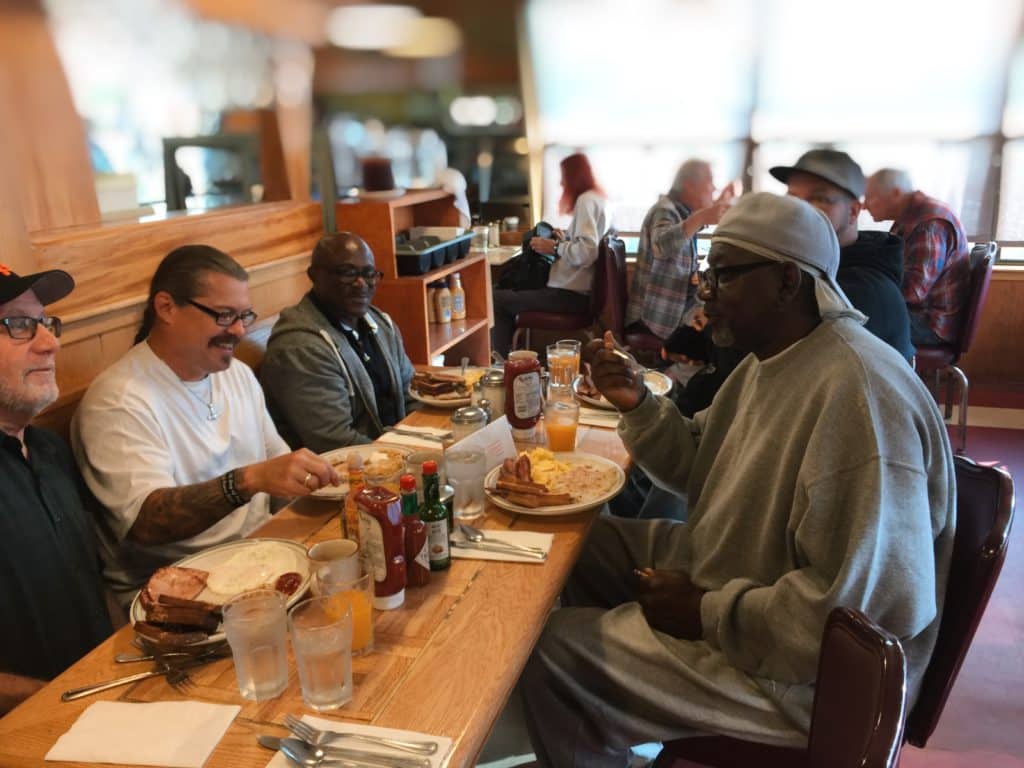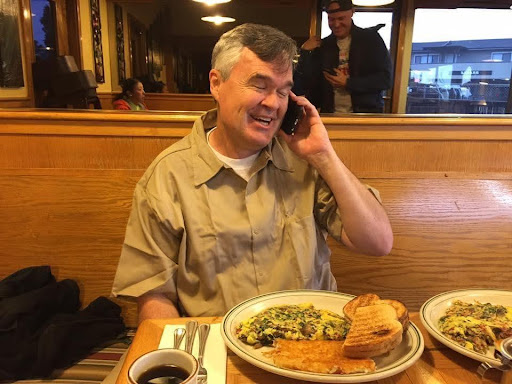As the executive director, these days, I don’t get a lot of chances to meet people at the gate when they are being released. I recently had a chance to get back out and do the thing that I love while training a new welcome driver. In November, we welcomed someone home from California Men’s Colony (CMC) who served 37 years.
I’m always telling people that we are not a transportation company. When we meet people at the prison gate, it’s an opportunity to create a bond and reinforce community with someone when they are at a crucial and vulnerable point in their lives.

When lifers are released, many times, they are overwhelmed by the sudden move to a new and very different environment. Many people define the experience as surreal. Many times, you can see a glaze of shock in their eyes. When someone is released after serving decades, they may feel a range of emotions — fear, disbelief, overstimulation, guilt, joy, and others. They are eager to restart their lives but unsure about how well their plans will work in a new world that uses tools and technology that didn’t exist when they went to prison.
This time was no different. The person that we welcomed had been told by prison staff how scary the world is now in comparison to what it was like when he went to prison. He exited the prison, literally afraid of what he was going to find. It was as if he was holding his breath as he waited for someone to do something harmful or mean. As we drove to breakfast and got to know each other, I could feel his apprehension decrease.
When we welcome people home, we take them to breakfast for very important reasons. First, breakfast serves as a bonding experience, which reinforces the notion that we are a community and that they are a part of it. It ensures that the person being released knows that while being released from prison is shocking, lonely, and disorienting — they are not alone. Rather than being whisked from one institution to another, we use breakfast as a time to kind of decompress; to let people sit and feel their freedom. Most times, I’ll directly ask, “How does it feel?” I did so this time too, and watched as tears welled in his eyes, and he said, “I never thought that I’d be in a restaurant again.”
As usually happens, he paroled wearing the only clothes he had, so we stopped at a store to get a couple of changes of clothes. Like breakfast, this stop is a crucial part of the day. While in the store, he commented on how everyone is so nice, and it wasn’t what he expected. I told him that people are still people and that most people want to do good and believe in the good in other people. I gave him an example of something that happened on our way to pick him up.
The driver that I was training and I stopped at a gas station, and the cashier mentioned that she really liked the kind of coat that he was wearing, but she couldn’t afford one. Without saying a word, he emptied his pockets and gave her his coat. The cashier slowly took it in disbelief and told us that it would be her birthday in a couple of days. Our new driver wished her a happy birthday. As we left the gas station, she knocked on the window and waved at us.
The person who we picked up walked a couple of aisles over to our new driver and shook his hand. The story was just what he needed to hear. For the rest of the ride, he was more relaxed and talked about the different ways that he wanted to “give back” to the community. As we dropped him off, he thanked us and said that he was glad that it was us who picked him up.
As I thought about the morning, the training, and our policies, procedures, and overall philosophy, I was grateful for the opportunity to be a part of that very special day. I went to bed more convinced than ever that Bonafide’s rationale for being present on the first day that someone is released after serving a long sentence is sound and absolutely important. I am also confident in the qualities we look for when we choose drivers to do this important work, and proud to see them in action.
Our welcome drivers are mostly former “lifers,” people who served indeterminate sentences. They can identify with the amazing range of emotions one feels coming home from prison, and they can therefore support others in identifying them and managing them. They also leverage other important skills in this role — for example, they are incredible mentors. They are conscious of the fact that they are the first example of what it looks like to be free after incarceration and the first example of how to interact with people around them. They provide comfort and inspire confidence and are living proof that all of the hard work that nearly all former “lifers” have done to develop tremendous empathy and care for others does pay off.
This is why, even though we meet people at the gate when they are released, Bonafide is not a transportation program. We lead with the heart.



This is an awesome service that Bonafide, org provides for men coming out of prison. I applaud your efforts ten fold!!!
Thanks, Gwen! I hope you’re doing well!